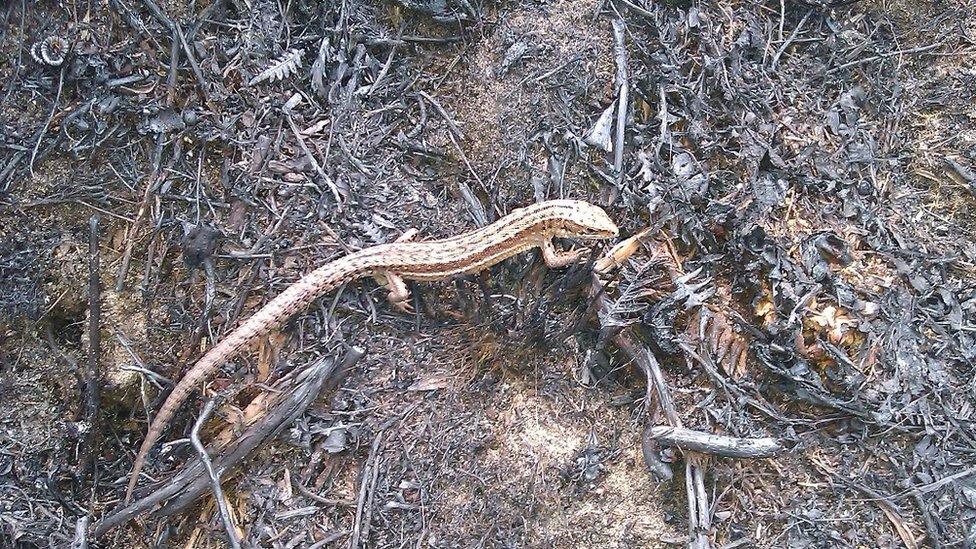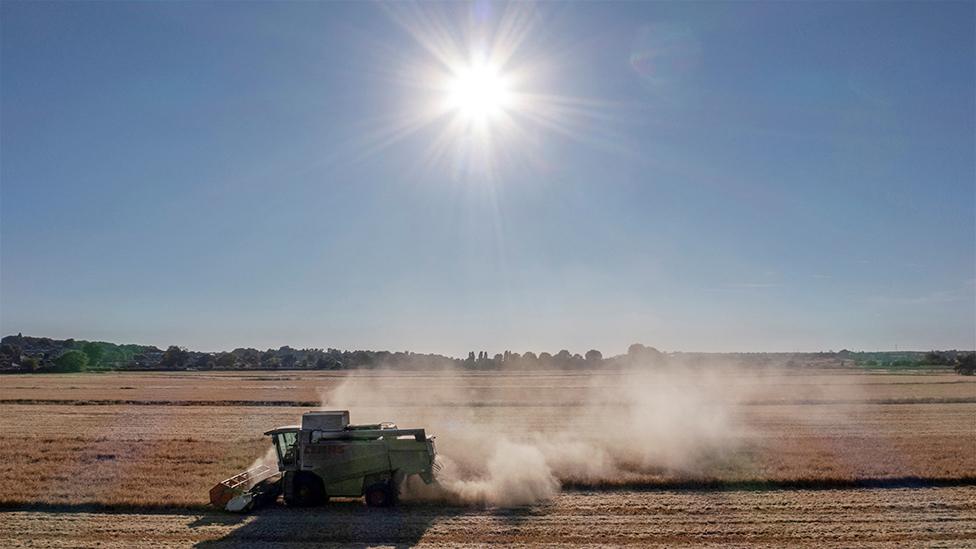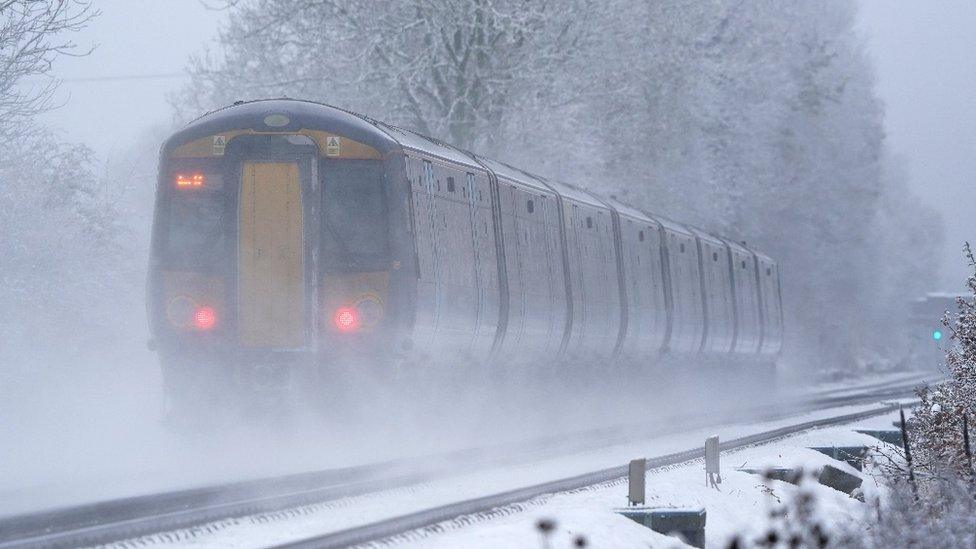2022 will be warmest year ever for UK, Met Office says
- Published

2022 saw soaring temperatures, drought, back-to-back storms and a ferocious cold snap this winter
The Met Office has said 2022 will be the warmest year on record for the UK.
According to provisional figures, external, every month was hotter than average, with the exception of December when the UK experienced a notable cold snap.
The year's average temperature will likely beat the previous all-time high of 9.88C, set in 2014.
The exact mean temperature is set to be confirmed in the new year but the Met office said the consistent heat this year had been noteworthy.
Dr Mark McCarthy, a senior climate scientist at the Met Office, said the provisional figures are in line with the "genuine impacts we expect as a result of human-induced climate change".
"Although it doesn't mean every year will be the warmest on record, climate change continues to increase the chances of increasingly warm years over the coming decades," Dr McCarthy added.
A spell of heatwaves in June led to the UK experiencing its fourth warmest summer on record, as temperatures broke the 40C mark for the first time.
During the intense heat in July, the Met Office issued its first ever red warning for extreme heat. The temperatures seen in mid-July would have been "extremely unlikely in the pre-industrial period - the era before humanity started emitting lots of greenhouse gases," Dr McCarthy explained.
"As we have seen in the first two weeks of December, our climate is still subject to notable cold spells during the winter season, but our observational data show these have generally become less frequent and less severe as our climate warms," he said.

The weather extremes of 2022
In February, Storm Franklin became the third named storm to hit the UK in a week - following Dudley and Eunice - the first time this has happened since the storm naming system was introduced in 2015
A new record UK high of 40.3C was recorded at Coningsby in Lincolnshire on 19 July 2022
An official drought was declared in large parts of England in August, as low-water levels and tinder-dry conditions gripped the UK
Autumn 2022 was one of the UK's warmest, with November being 1.8C above average, making it the third warmest on record, behind only 2006 and 2011, according to the Met Office
December's cold snap put the UK in the grip of a spell of severe cold weather, with snow, ice and fog warnings in place across the UK

BBC Weather's Ben Rich looks at whether UK winters are changing
Last week, the Met Office said it was expecting 2023 to be warmer than this year, and one of the hottest on record.
Predictions suggest it will be the 10th year in a row where the global temperature is at least 1C above average.
Scientific evidence shows that climate change is driving up the global temperature, and governments around the world have promised to cut emissions to keep temperature rises below 1.5C.

In a separate report, the National Trust warned that extreme weather seen throughout the year has set a benchmark for what a typical year could be like.
The charity said high temperatures, drought and back-to-back storms have created major challenges for nature in years to come.
In its annual review, it said this year was a "stark illustration" of the difficulties many UK species could face without more action to tackle climate change.
The hot summer and months of low rainfall dried up rivers, fragile chalk streams and ponds, damaged crops and natural habitats, and fuelled wildfires that destroyed landscapes, the charity said.

Wildfires in the West Country destroyed the habitat of some of the UK's rarest species, including sand lizards.
The National Trust's climate change adviser, Keith Jones, said there was "no escaping" how challenging this year's weather had been for nature.
"Drought, high temperatures, back-to-back storms, unseasonal heat, the recent cold snap and floods means nature, like us, is having to cope with a new litany of weather extremes," he said.
He added weather experts were predicting, external the future would see more torrential downpours, along with very dry and hot summers.
Related topics
- Published20 December 2022

- Published28 December 2022

- Published3 July 2023

- Published14 December 2022